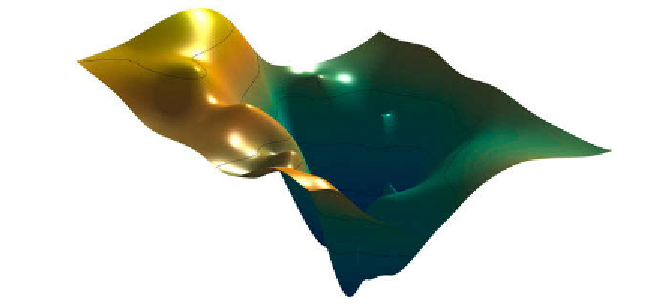Geoscience Reference
In-Depth Information
Fig. 7.7
h ree-dimensional colored surface with interpolated shading and simulated lighting.
h e axis labeling, ticks and background are turned of . h e plot also contains 3D contours,
in black.
h e biharmonic spline interpolation described in this section provides a
solution to most gridding problems. It was therefore, for some time, the only
gridding method that came with MATLAB. However, dif erent applications
in earth sciences require dif erent methods of interpolation, although they
all have their problems. h e next section compares biharmonic spline
interpolation with other gridding methods and summarizes their strengths
and weaknesses.
7.8 Comparison of Methods and Potential Artifacts
h ei rst example in this section illustrates the use of the
bilinear interpolation
technique for gridding irregular-spaced data. Bilinear interpolation is
an extension of the one-dimensional technique of linear interpolation
introduced in Section 5.5. In the two-dimensional case, linear interpolation is
i rst performed in one direction, and then in the other direction. h e bilinear
method would appear to be one of the simplest interpolation techniques,
which might intuitively not be expected to produce serious artifacts or
distortions in the data. h e opposite is true, however, as this method has a
number of disadvantages and other methods are therefore preferred in many
applications.
h e sample data used in the previous section can again be loaded to study
the ef ects of a bilinear interpolation.

